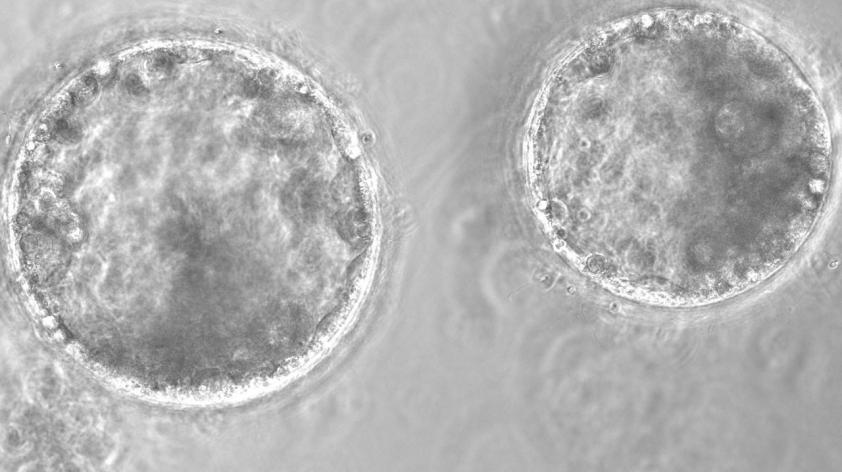
Time lapse video of early embryonic development
It’s amazing what technology can do today. For example, the Reproductive Sciences lab has a new piece of equipment called the Biostation IMQ. It is a microscope inside a small incubator that takes pictures of my samples at time intervals I program into it, which creates a time lapse video.
Typically, we use large incubators to grow and develop ooctyes and embryos. When I want to look at them I have to open the incubator door, take the samples out, place them on a microscope and take a picture. Never before have we seen a video of embryos growing inside of the petri dish. It’s amazing!
As a member of the Reproductive Sciences team, I fertilize ova and grow embryos in a dish in order to prevent species from going extinct.
One of my priority projects is the Northern White Rhino Initiative. My hope is to one day produce white rhino embryos in vitro. Yet, in order to examine the embryos, I must remove them from the safe environment of the incubator and expose them to environmental hazards such as temperature changes and possible contaminants.
Embryos are typically removed and examined just once a day, which limits the information we can gather about their developmental timeline, which makes it more difficult to identify the embryos with the best chance of producing a viable pregnancy. With embryos as valuable as these, the amount of time outside the incubator is crucial. These longstanding issues are being addressed by the biostation, which maintains the perfect incubation conditions while creating a time-lapse video of the embryo's development. This removes the need to expose the embryo to the outside atmosphere, and provides us with far greater information.
This system allows us to observe the dynamics of embryo development, which is important because embryos that show early abnormalities can be immediately eliminated as candidates for transfer into a surrogate rhino.
I have been testing this new device with domestic cat embryos as a control before attempting to grow rhino embryos in the biostation. My co-worker and I have transformed the hundreds of photographs into a short video. You will see the cat embryos start at the 2-cell stage and the blastomeres (individual cells) keep dividing to form 4-cell then 8-cell, 16-cell, 32-cell embryos. Then the blastomeres compact to make a morula, which eventually forms a blastocyst. The blastocyst and hatched blastocyst stages are the final stages before uterine implantation. The cells differentiate into an outer layer of cells (trophoblast) and an inner cell mass. The inner cell mass will eventually become the fetus and trophoblast will develop into the placenta. This video ends at the hatched blastocyst stage because we would typically perform an embryo transfer at this point.
Please enjoy this fascinating video of embryo development as much as I do!













